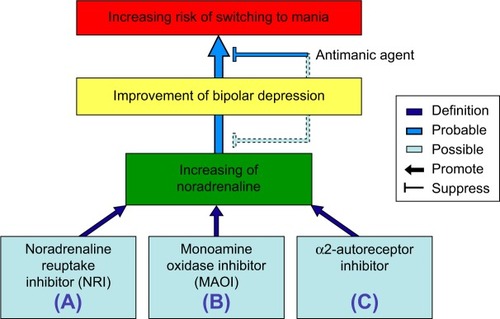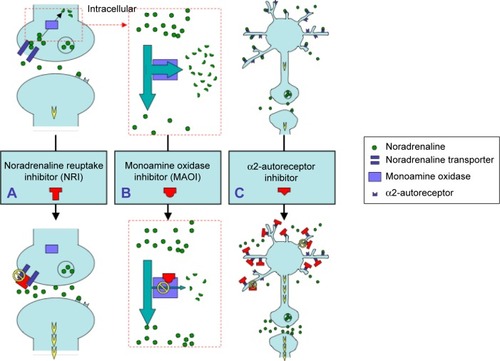Figures & data
Figure 1 Schematic illustration showing the improvement or switching pathways induced by various antidepressants affecting the levels of noradrenaline.

Figure 2 Schematic illustration of the pathways leading to increasing noradrenaline levels as caused by the administration of various antidepressants.
Abbreviations: MAOI, monoamine oxidase inhibitor; NRI, noradrenaline reuptake inhibitor.

Table 1 Various antidepressants showing the improvement of depression or the risk of switching to mania based on their affinities for NET
